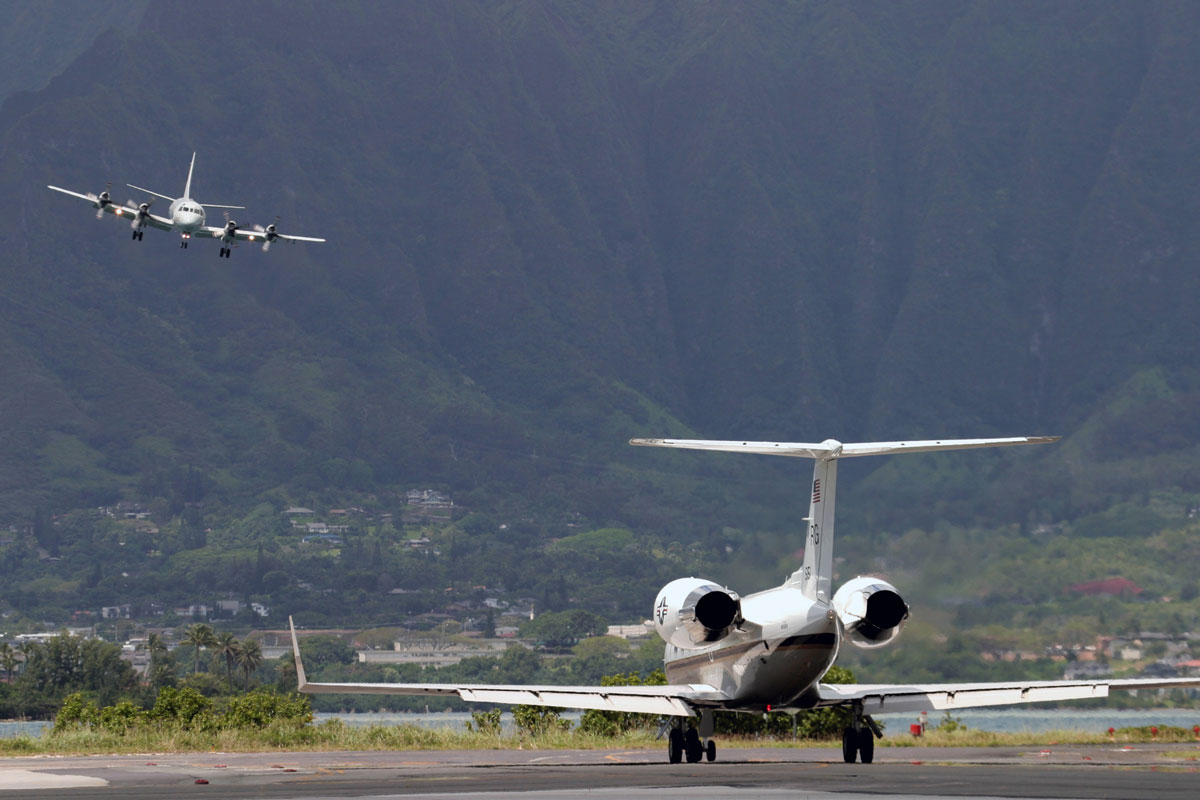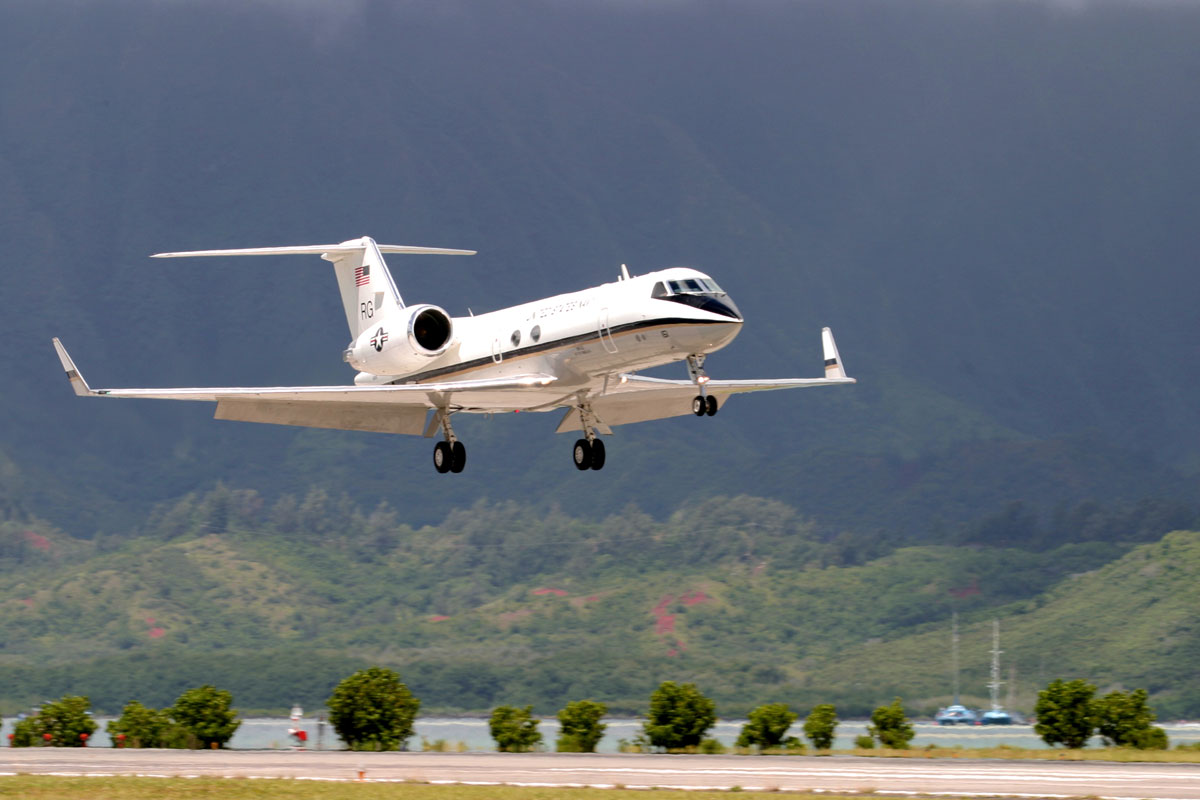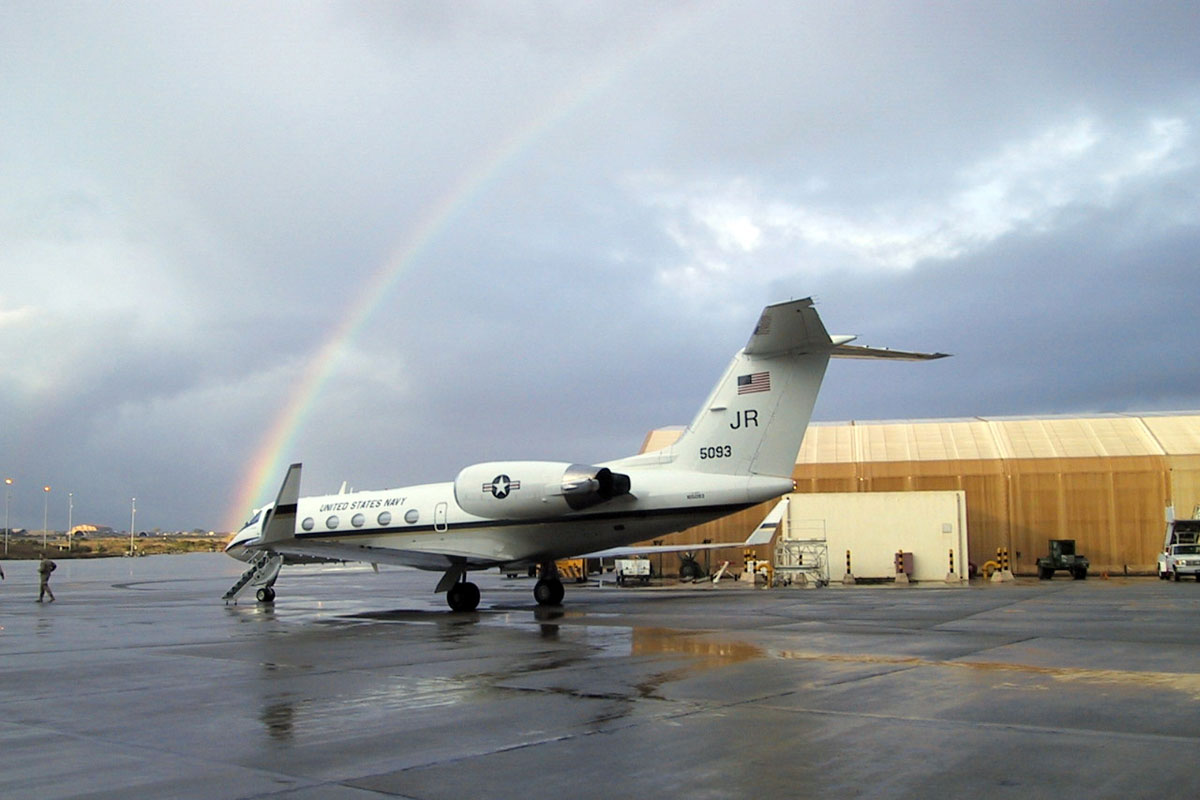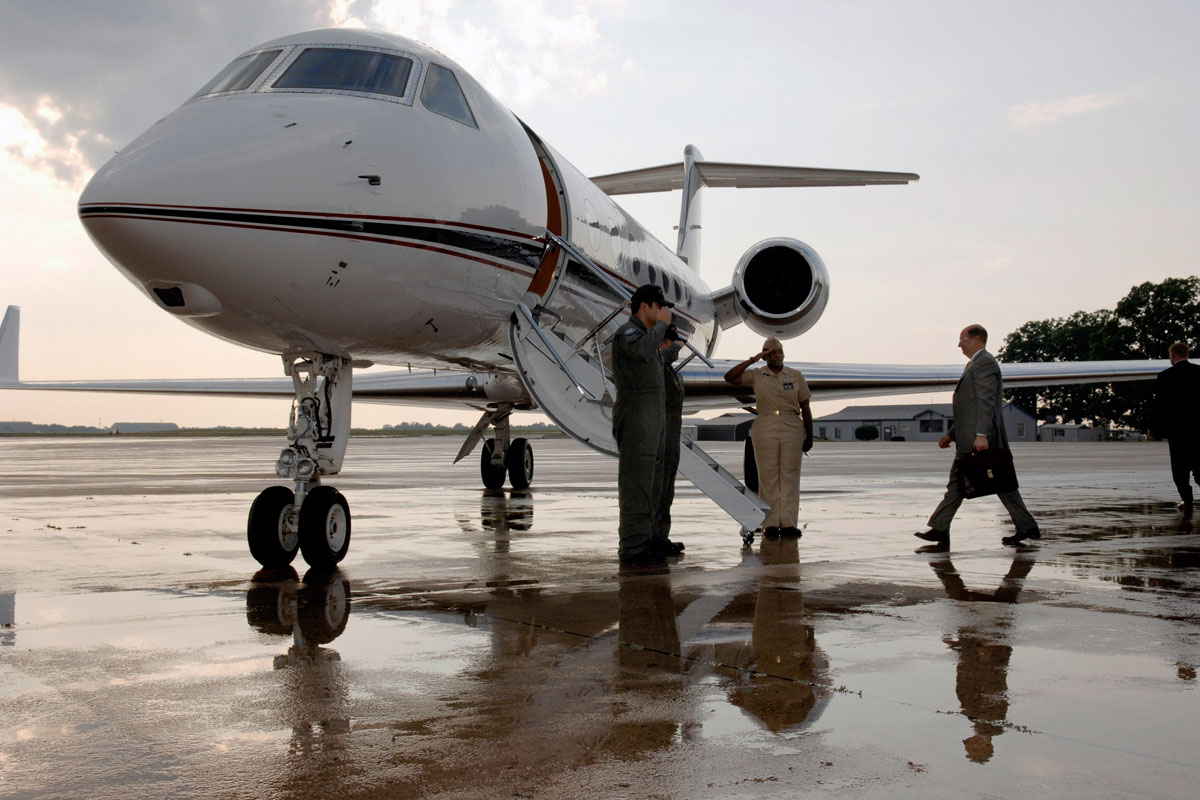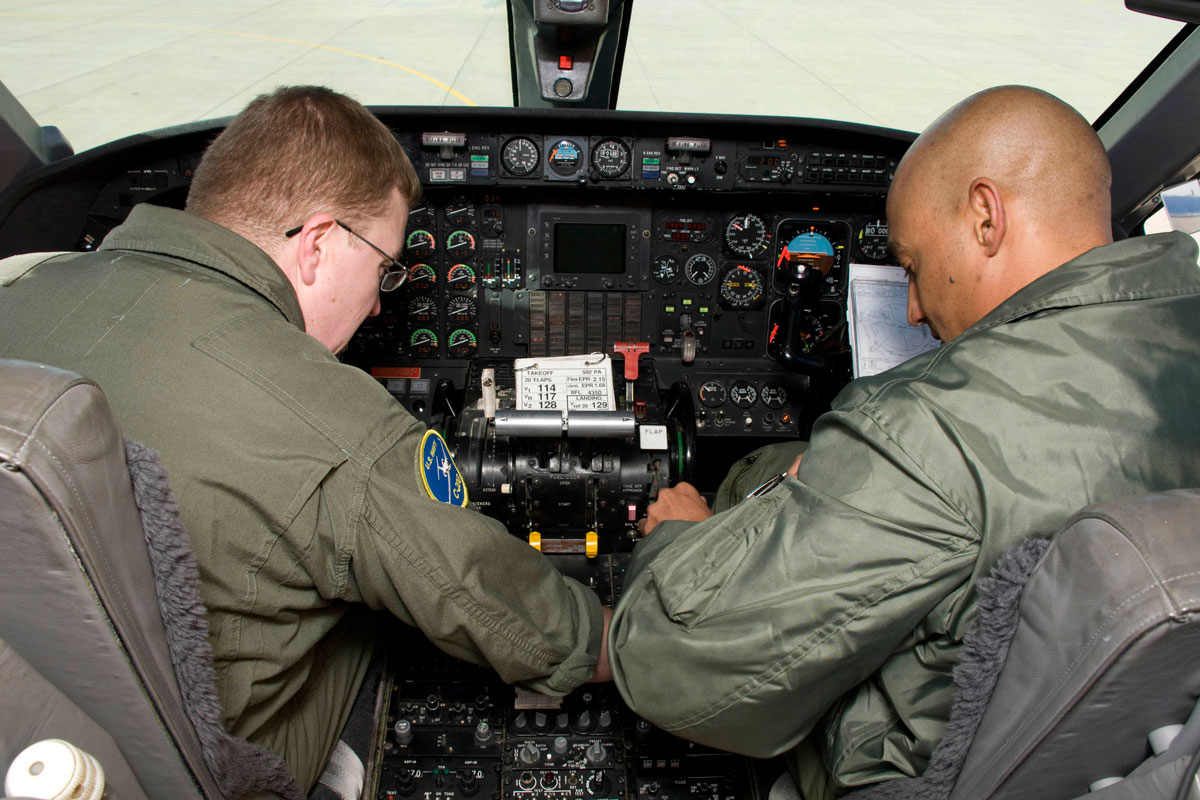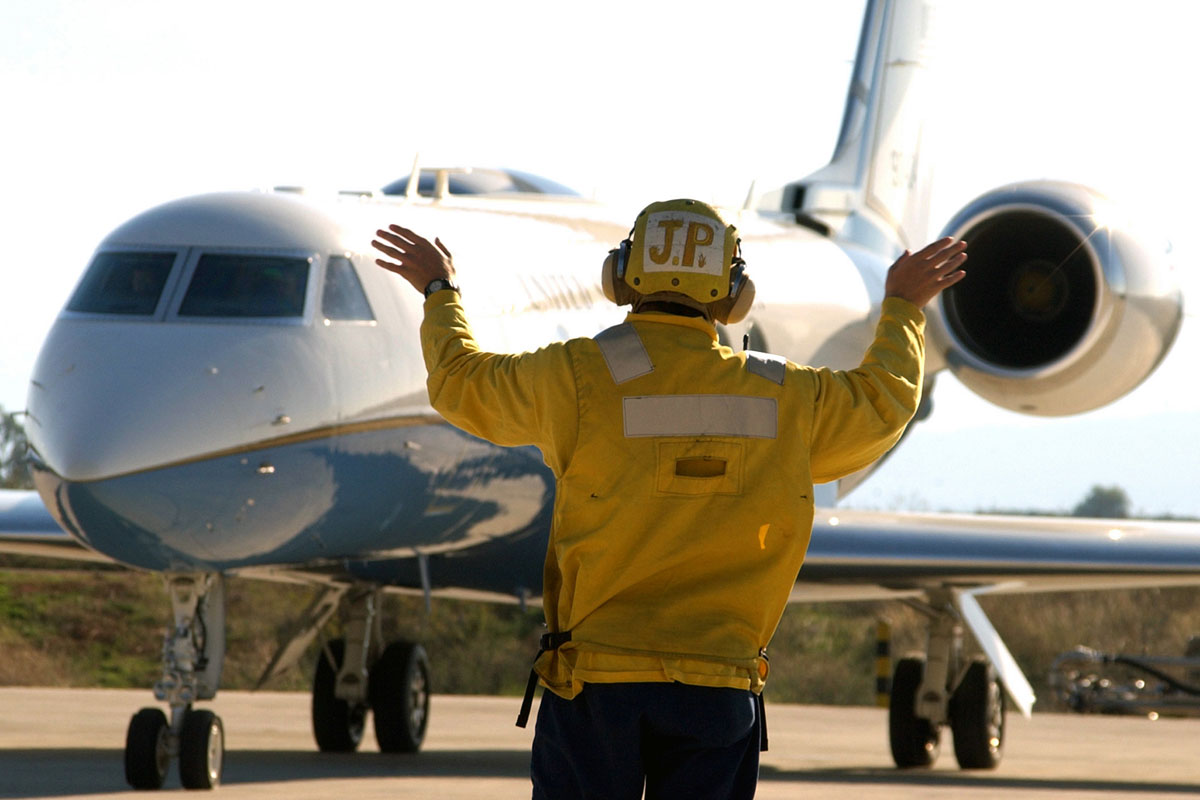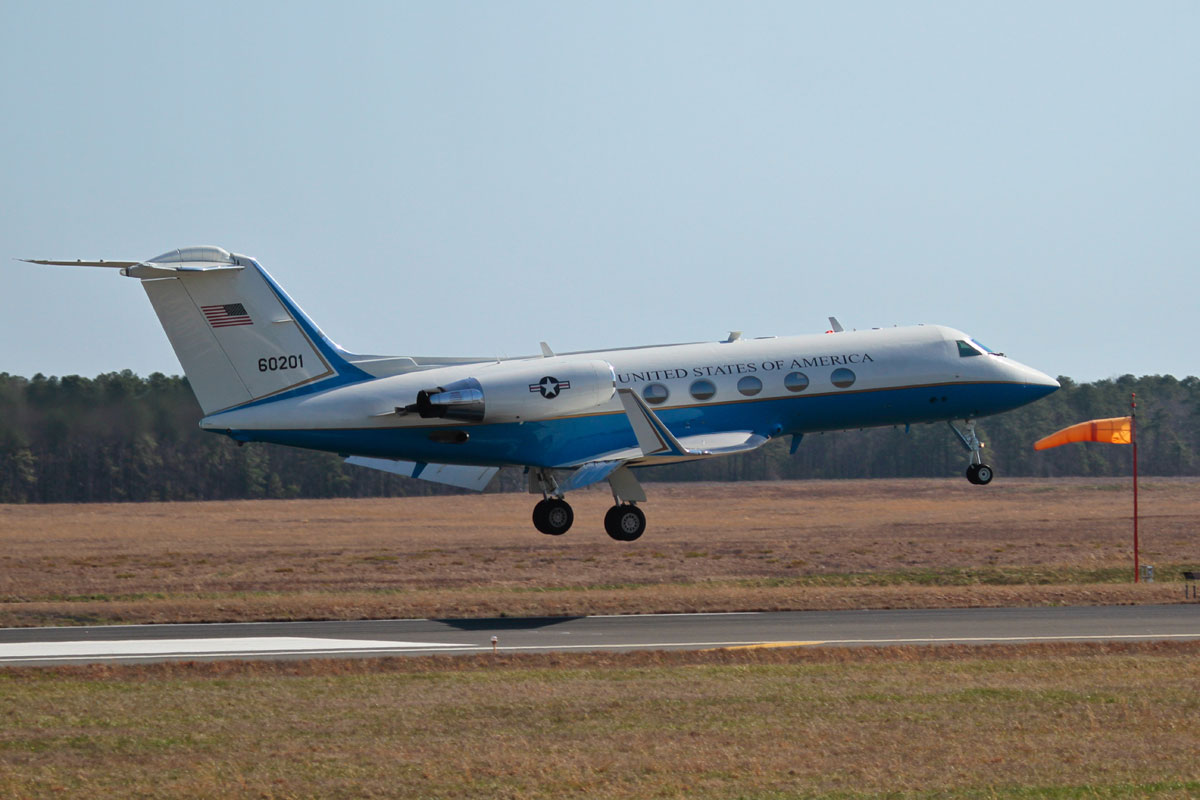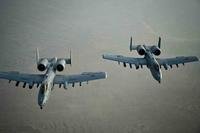Builder: Gulfstream Aerospace Corp.
Services: US Air Force, US Navy
Power Plant: C-20B, two Rolls-Royce Spey Mark 511-8 turbofan engines; C-20H, two Rolls-Royce Tay Mark 611-8 turbofan engines
Speed: 576 mph (501 nautical miles per hour) maximum
Range: C-20B, 4,250 miles (3,698 nautical miles) long-range; C-20H, 4,850 miles (4,220 nautical miles) long range
Ceiling: 45,000 feet (13,716 meters)
Crew: Five (pilot, co-pilot, flight engineer, communication system operator, flight attendant)
The C-20 is the military version of the civilian Gulfstream III and IV aircraft. Entering U.S. military service in 1983 as the replacement for the C-140B, the C-20 serves as a primary lift aircraft for high-ranking U.S. military and civilian officials. The C-20G (Gulfstream III) is an all-weather, long-range, high speed aircraft powered by two Rolls-Royce Spey MK511-8 turbofan engines with thrust reversers. The aircraft has an executive compartment with accommodations for five passengers and a staff compartment with accommodations for eight passengers. A walk-in baggage area of 157 cubic feet is fully pressurized and accessible from the cabin.
Later versions of the C-20 (H-model, GIV) can be configured for cargo operations, passenger operations or combinations of the two. With passengers seats removed, it may be modified to the following configurations: three pallets/no passengers, two pallets/eight passengers, and one pallet/fourteen passengers. With a full complement of seats installed, the aircraft is capable of accommodating up to twenty-six passengers and a crew of four.
A hydraulically-operated cargo door is installed on the starboard side of the aircraft to facilitate loading and unloading of cargo. The C-20 also features a full suite of secure global communications equipment.
